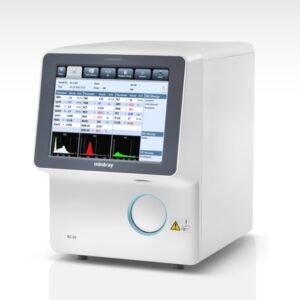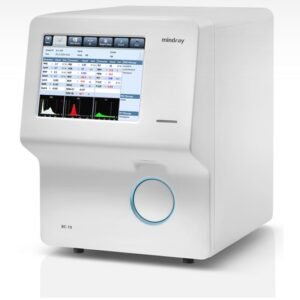- Choose the correct statement about the genetic code.
- a) includes 61 codons for amino acids and 3 stop codons
- b) almost universal; exactly the same in most genetic systems
- c) three bases per codon
- d) some amino acids are coded by multiple codons
- e) all of the above ✅
- X-chromosome inactivation
- a) normally takes place in males but not females
- b) is the cause of the Y chromosome being genetically inactive
- c) occurs in fruit flies but not in mammals
- d) results in genetically turning off one of the two X chromosomes in female mammals ✅
- DNA ligase is:
- a) an enzyme that joins fragments in normal DNA replication ✅
- b) an enzyme involved in protein synthesis
- c) an enzyme of bacterial origin which cuts DNA at defined base sequences
- d) an enzyme that facilitates transcription of specific genes
- e) an enzyme which limits the level to which a particular nutrient reaches
- Replication of DNA:
- a) takes place in a “conservative” manner
- b) takes place in a “dispersive” manner
- c) takes place in a “semi-conservative” manner ✅
- d) usually involves one origin of replication per chromosome in eukaryotes
- e) takes place only in the 3’ to 5’ direction
- A mutation in a codon leads to the substitution of one amino acid with another. What is the name for this type of mutation?
- a) nonsense mutation
- b) missense mutation ✅
- c) frameshift mutation
- d) promoter mutation
- e) operator mutation
- Mapping of human chromosomes:
- a) has been restricted to the sex chromosomes because of small family sizes
- b) Proceeded much more successfully as large numbers of DNA markers became available. ✅
- c) has determined that the number of linkage groups is about twice the number of chromosomes
- d) has demonstrated that almost all of the DNA is involved in coding for genes
- e) has shown that there are more genes on the Y than on the X chromosome
- RFLP analysis is a technique that
- a) uses hybridization to detect specific DNA restriction fragments in genomic DNA ✅
- b) is used to determine whether a gene is transcribed in specific cells
- c) measures the transfer frequency of genes during conjugation
- d) is used to detect genetic variation at the protein level.
- e) is used to amplify genes for producing useful products
- Simple tandem repeat polymorphisms in humans are most useful for:
- a) solving criminal and paternity cases ✅
- b) Reconstructing the relationships of humans and chimps.
- c) estimating relationships of humans and Neanderthals
- d) transferring disease resistance factors into bone marrow cells
- e) estimating matches for blood transfusions
- The polymerase chain reaction or PCR is a technique that
- a) was used to demonstrate DNA as the genetic material
- b) is used to determine the content of minerals in a soil sample
- c) Uses short DNA primers and a thermostable DNA polymerase to replicate specific DNA sequences in vitro. ✅
- d) measures the ribosome transfer rate during translation
- e) detects the level of polymerases involved in replication
- Positional cloning refers to:
- a) using a selection procedure to clone a cDNA
- b) cloning a portion of a gene using PCR
- c) isolating a gene by PCR using primers from another species
- d) isolating a gene from a specific tissue in which it is being expressed
- e) mapping a gene to a chromosomal region and then identifying and cloning a genomic copy of the gene from the region ✅
- The “sticky ends” generated by restriction enzymes allow:
- a) selection for plasmids lacking antibiotic resistance
- b) easy identification of plasmids which carry an insert
- c) replication of transfer RNA within the bacterial cell
- d) insertion of centromeres into ribosomes lacking them
- e) pieces of DNA from different sources to hybridize to each other and to be joined together ✅
- Mitochondrial DNA is advantageous for evolutionary studies because:
- a) it is inherited only through the female parent and thus evolves in a way that allows trees of relationship to be easily constructed ✅
- b) it is inserted into the X chromosome
- c) it first appeared in humans and is not found in other animals
- d) it evolves more slowly than the genes in the nucleus
- e) it was derived from the globin genes as an extra copy
- Four of the five answers below are sources of genetic variation. Select the exception.
- a) Crossing over
- b) mutation
- c) asexual reproduction ✅
- d) independent assortment
- e) sexual reproduction
- An organism with two identical alleles is
- a) dominant
- b) hybrid
- c) heterozygous
- d) homozygous ✅
- RR (Red) Antirrhinum is crossed with white (WW) one. Offspring RW are pink. This is an example of
- a) dominant-recessive
- b) incomplete dominance ✅
- Normal human eggs have:
- a) 22 autosomes and an X chromosome. ✅
- b) 22 autosomes and a Y chromosome
- c) 23 autosomes.
- d) 46 chromosomes
- A gene is a section of DNA that codes for a protein, this unique sequence of bases will code for the production of a unique protein is:
- a) Exon
- b) Intron
- c) Regulatory sequence
- d) None of these ✅
- On which of the following molecules would you find a codon?
- a) Messenger RNA ✅
- b) ribosomal RNA
- c) transfer RNA
- d) small nuclear RNA
- Which of the following mutations is most likely to be disruptive to protein synthesis or function?
- a) UAU to UAC
- b) UAU to UUU
- c) UAU to UAA ✅
- d) UAU to CAU
- Which of the following is correct with regard to aneuploidy?
- a) Inversion
- b) 2n + 1 ✅
- c) All aneuploid individuals die before birth
- d) 4n
- The triplet code of CAT in DNA is represented as ______ in mRNA
- a) GAA
- b) CAT
- c) GUA ✅
- d) GTA
- Which cell cycle stage is known for DNA replication?
- a) S-phase ✅
- b) G1 phase
- c) G2 phase
- d) Metaphase
- When a single gene influences more than one trait it is called
- a) pseudodominance
- b) pleiotrophy ✅
- c) epistasis
- d) None of these.
- A gene is said to be dominant if it expresses its effect
- a) only in homozygous state it expresses its effect
- b) only in heterozygous condition
- c) It expresses its effect both in homozygous and heterozygous condition. ✅
- d) It never expresses its effect in any condition.
- All of the following are true of an individual’s DNA except:
- a) Environmental mutagens can cause the expression of a recessive allele that otherwise would not be expressed in a heterozygous individual.
- b) Somatic mutations, like germ line mutations, are passed on to progeny. ✅
- c) Tumors can result from spontaneous translocations affecting proto-oncogenes.
- Those mutations that arise in the absence of known mutagen are known
- a) Induced mutation
- b) Fused mutations
- c) Spontaneous mutations ✅
- d) None of the above
- A shift in the reading frame is usually caused by an insertion or a
- a) Transversion
- b) Transition
- c) Base substitution
- d) Nonsense mutation
- e) Deletion ✅
- All of the cells within an individual are genetically identical.
- a) True
- b) False ✅
Fiber Mini Otoscope – Ear Scope with Light – Ear infection Detector – with 3x Magnify Lens
Original price was: ₨ 3,000.₨ 2,250Current price is: ₨ 2,250.
otoscope price in pakistan in 2025
Original price was: ₨ 5,000.₨ 3,000Current price is: ₨ 3,000.





